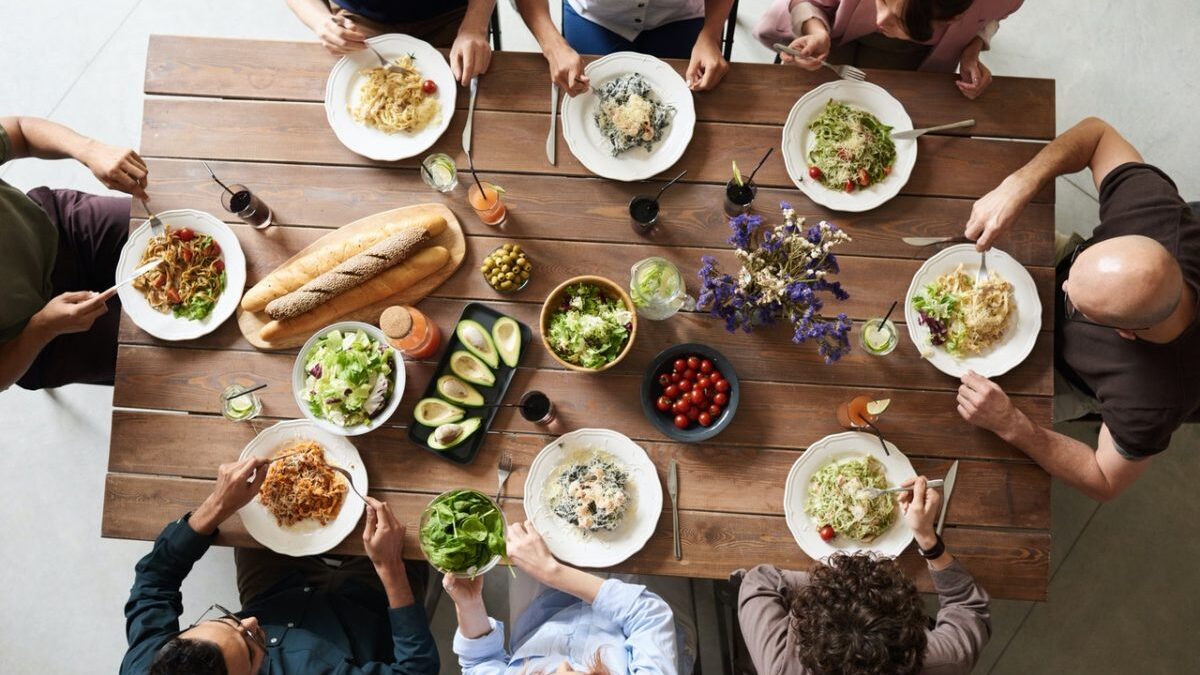Food is inextricably linked to culture. When we think about the practices, beliefs, customs and symbols that produce a set of cultural mores, food is almost always at the center. Like many, observing my parents prepare family recipes in the kitchen spurred some of my earliest memories of conversations about my own cultural identity. My dad, who immigrated from Jamaica as a young adult, introduced me to his Caribbean homeland through a handful of traditional Jamaican dishes he proudly prepared, including rice and peas and spinners (a popular type of dumpling).
Not every meal, however, carries profound cultural significance, and not every meal we prepare can be a sentimental recipe. Many of the decisions we make about food are practical and banal out of necessity. On any given day, I select lunch based on how easily I can eat it at my desk, and plan my dinner based on how quickly I can cook—or order—a meal and still have some time to enjoy TV and relax for the evening. But when you go too long without having a meal that reminds you of the powerful cultural reflection food can be, you can easily forget what a luxury it is to have such an experience. That is why Harlem’s The Cecil was such a consequential restaurant for me and continues to be even though it closed over four years ago.
By the time I had saved up enough money to afford a proper meal at The Cecil, it had already been designated as one of Harlem’s most dynamic dining destinations, named Esquire’s Best New Restaurant by prominent food writer Josh Ozersky, and attracted diners from all four corners of the city (and country). The Cecil had distinguished itself in a city with over 24,000 restaurants by introducing a concept that was then unique to New York City’s dining scene. The restaurant described its menu as Afro-Asian-American cuisine, boasting signature dishes such as Citrus Jerk Golden Snapper, Feijoada with Merguez Sausage and Oxtail, and Tamarind-Glazed Oxtails with Pickled Cabbage and Brown-Rice Grits.
That first meal was as spectacular as the Esquire writer and others said it would be, but I would not fully appreciate The Cecil and its culinary splendor immediately. It wasn’t until I had the opportunity to return to the restaurant two years later that I would be able to forge my cultural connection to The Cecil. When I did return, it was not as a diner but as a publicist for Harlem EatUp!’s inaugural festival, which The Cecil was participating in. I returned to The Cecil on a weekday afternoon—before dinner service—to oversee a cooking demonstration and an interview between a journalist and the restaurant’s chef, JJ Johnson.
Chef Johnson began the interview by talking about his excitement for Harlem EatUp! and the diversity of Harlem’s dining scene that would make the festival exceptional. But as I was listening to him detail the inspiration behind his restaurant’s Afro-Asian-American cuisine, he completely arrested my attention by describing his menu as diasporic. It seems so obvious now, but it was a bit of a paradigm shift in that moment to think about food in such geopolitical terms.
For me, the word “diaspora” evoked a history of forced migration and labor, centuries of expulsions and expansions, perilous crossings and colonial encounters, and resilience and adaptation. It was my first time hearing someone contextualize food in such culturally laden terms, and it allowed me to more fully understand the complexity, history and richness of Chef Johnson’s Afro-Asian-American cuisine and his point of view as a chef.
There was no way for Chef Johnson to know this, but his language and insight not only gave me a global and historical perspective to reflect on to the restaurant but a localized one as well. I had recently uncovered that my own diasporic heritage included Indian and Scottish roots by way of Jamaica.
I had the opportunity to have a few more leisurely dinners at The Cecil before the restaurant closed permanently a few years later, but eating there was never the same again. From that point on, I was more acutely aware of the ocean crossings and cultural adaptions ingredients that had survived in order to appear on my plate. And each time, the menu made me reflect on the ocean crossings and cultural adaptations my own genealogy had survived in order for me to be sitting at the table.
In that respect, visiting The Cecil was not just an epicurean treat, but an occasion for me to reflect on my own complexity. Because there are not many meals that can still do that, the experience is its own kind of indulgence. That kind of cultural connection to an ingredient or recipe lingers on the palette long after the taste of the ingredient or dish has abated.
I have been a food publicist for well over a decade, and one of the reasons I have found my work so fulfilling is because food is a lens for virtually any cultural issue—global or local. Food does not simply belong to the province of food writers. Its significance reaches far beyond the plate, the supermarket aisle, or the restaurant table. One of the most exciting aspects of working in this field has been to see how the food’s cultural and global impact has become integral across different sectors. The future of the food practice is one that will continue to be interdisciplinary. Food has grown to be a key issue driving conversations around environmental movements, climate change, social justice, technology, mental health—and that momentum is showing no signs of slowing down.
For more insights on communication and brand strategy, industry trends and more, subscribe today to the Weekly Buzz here.
This article originally appeared in partnership with O’Dwyer’s.
